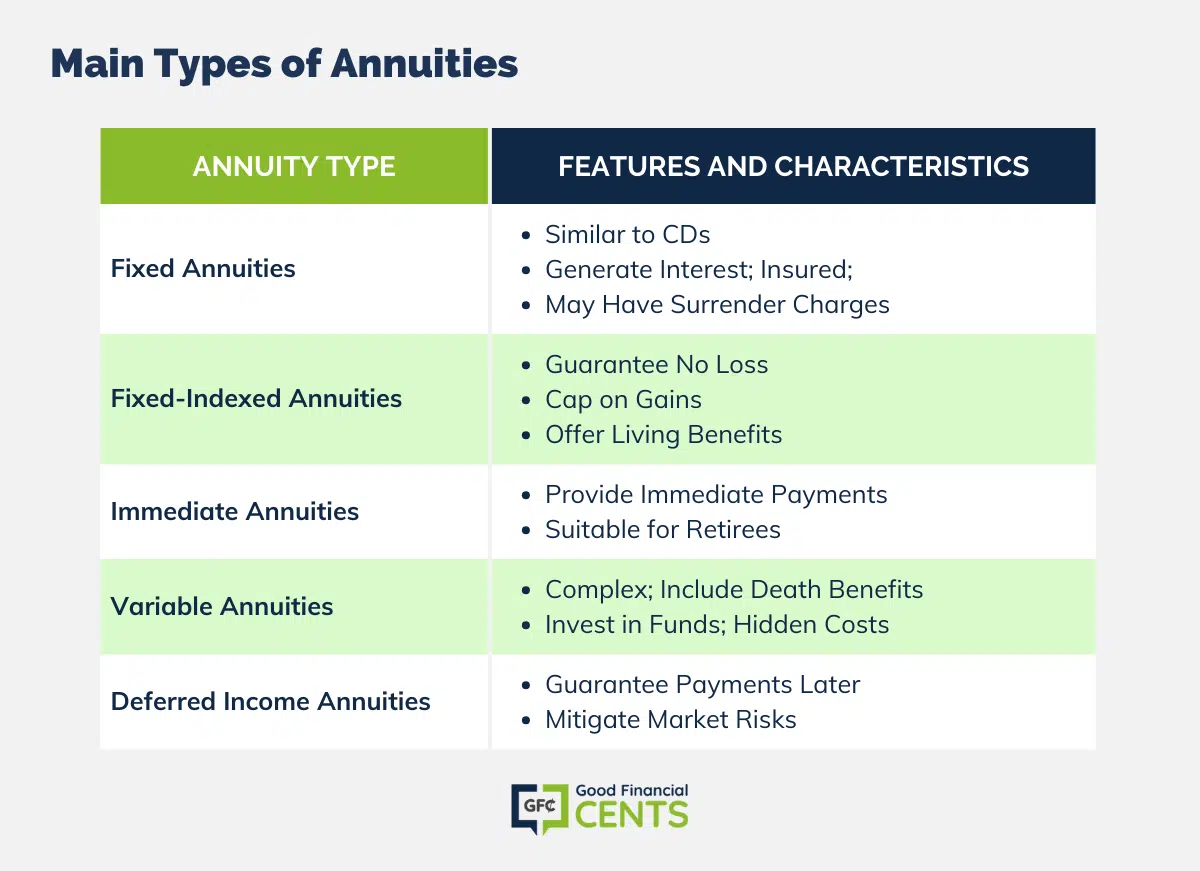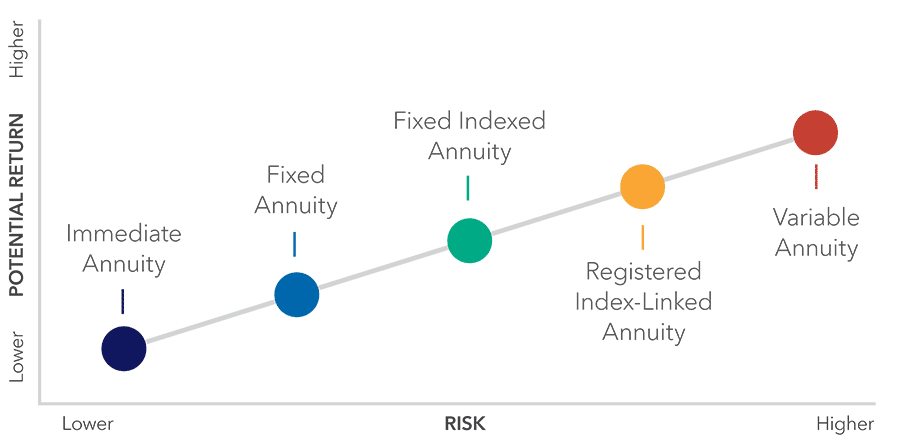All Categories
Featured
Table of Contents
The repayment might be spent for growth for an extended period of timea single premium postponed annuityor invested for a brief time, after which payout beginsa solitary premium instant annuity. Solitary premium annuities are commonly moneyed by rollovers or from the sale of a valued asset. A flexible costs annuity is an annuity that is intended to be funded by a collection of settlements.
Owners of dealt with annuities recognize at the time of their purchase what the value of the future capital will be that are created by the annuity. Certainly, the variety of cash circulations can not be recognized ahead of time (as this relies on the contract proprietor's life-span), however the assured, fixed rates of interest at least gives the owner some degree of certainty of future income from the annuity.
While this distinction seems basic and simple, it can significantly affect the worth that a contract owner inevitably originates from his/her annuity, and it creates significant uncertainty for the agreement proprietor - Fixed annuities vs market risk. It also generally has a product effect on the degree of charges that an agreement proprietor pays to the providing insurance provider
Set annuities are often utilized by older financiers who have limited possessions but that wish to balance out the threat of outliving their possessions. Fixed annuities can act as an efficient device for this purpose, though not without specific drawbacks. In the situation of instant annuities, as soon as an agreement has actually been acquired, the agreement proprietor relinquishes any type of and all control over the annuity assets.
Decoding Fixed Vs Variable Annuity Everything You Need to Know About Financial Strategies What Is Variable Vs Fixed Annuities? Advantages and Disadvantages of Different Retirement Plans Why Fixed Vs Variable Annuity Is a Smart Choice Choosing Between Fixed Annuity And Variable Annuity: Simplified Key Differences Between Annuity Fixed Vs Variable Understanding the Rewards of Long-Term Investments Who Should Consider Annuities Fixed Vs Variable? Tips for Choosing the Best Investment Strategy FAQs About Planning Your Financial Future Common Mistakes to Avoid When Planning Your Retirement Financial Planning Simplified: Understanding Variable Annuities Vs Fixed Annuities A Beginner’s Guide to Retirement Income Fixed Vs Variable Annuity A Closer Look at How to Build a Retirement Plan
For instance, an agreement with a common 10-year abandonment duration would charge a 10% abandonment charge if the contract was given up in the initial year, a 9% abandonment fee in the 2nd year, and so on until the abandonment cost gets to 0% in the contract's 11th year. Some delayed annuity agreements contain language that enables little withdrawals to be made at different intervals throughout the surrender period scot-free, though these allowances generally come with a price in the form of reduced surefire rate of interest.
Equally as with a taken care of annuity, the owner of a variable annuity pays an insurer a swelling sum or series of payments for the promise of a series of future repayments in return. As discussed above, while a dealt with annuity grows at an assured, constant rate, a variable annuity expands at a variable rate that depends upon the performance of the underlying investments, called sub-accounts.
Throughout the accumulation phase, properties purchased variable annuity sub-accounts grow on a tax-deferred basis and are strained just when the agreement owner withdraws those incomes from the account. After the accumulation phase comes the income stage. With time, variable annuity possessions should in theory increase in value until the contract proprietor chooses he or she would love to start withdrawing money from the account.
One of the most substantial concern that variable annuities normally existing is high price. Variable annuities have several layers of fees and expenses that can, in aggregate, develop a drag of approximately 3-4% of the contract's value every year. Below are the most typical costs connected with variable annuities. This expenditure compensates the insurance provider for the risk that it presumes under the terms of the agreement.
M&E expenditure costs are calculated as a percent of the agreement worth Annuity providers hand down recordkeeping and various other administrative costs to the agreement owner. This can be in the kind of a level annual fee or a percent of the agreement worth. Administrative fees might be consisted of as part of the M&E risk fee or might be analyzed independently.
These costs can range from 0.1% for easy funds to 1.5% or even more for proactively taken care of funds. Annuity contracts can be customized in a variety of ways to offer the certain requirements of the contract owner. Some common variable annuity cyclists consist of guaranteed minimal build-up benefit (GMAB), guaranteed minimum withdrawal advantage (GMWB), and ensured minimum income advantage (GMIB).
Highlighting Pros And Cons Of Fixed Annuity And Variable Annuity Everything You Need to Know About Financial Strategies What Is Fixed Vs Variable Annuity? Pros and Cons of Choosing Between Fixed Annuity And Variable Annuity Why Indexed Annuity Vs Fixed Annuity Is a Smart Choice What Is Variable Annuity Vs Fixed Annuity: Simplified Key Differences Between Different Financial Strategies Understanding the Rewards of Annuities Fixed Vs Variable Who Should Consider Variable Annuity Vs Fixed Indexed Annuity? Tips for Choosing the Best Investment Strategy FAQs About Tax Benefits Of Fixed Vs Variable Annuities Common Mistakes to Avoid When Planning Your Retirement Financial Planning Simplified: Understanding Annuities Fixed Vs Variable A Beginner’s Guide to Fixed Annuity Or Variable Annuity A Closer Look at How to Build a Retirement Plan
Variable annuity contributions provide no such tax obligation deduction. Variable annuities often tend to be extremely inefficient automobiles for passing wide range to the future generation since they do not enjoy a cost-basis adjustment when the initial agreement owner passes away. When the owner of a taxed investment account passes away, the price bases of the investments held in the account are adapted to reflect the market costs of those financial investments at the time of the proprietor's fatality.
Such is not the situation with variable annuities. Investments held within a variable annuity do not receive a cost-basis adjustment when the original owner of the annuity passes away.

One considerable issue associated with variable annuities is the possibility for conflicts of interest that might exist on the part of annuity salespeople. Unlike a financial expert, that has a fiduciary task to make financial investment choices that profit the customer, an insurance broker has no such fiduciary obligation. Annuity sales are highly financially rewarding for the insurance policy specialists that sell them as a result of high ahead of time sales payments.
Numerous variable annuity agreements contain language which puts a cap on the percentage of gain that can be experienced by particular sub-accounts. These caps avoid the annuity owner from fully taking part in a portion of gains that can or else be appreciated in years in which markets produce substantial returns. From an outsider's point of view, presumably that financiers are trading a cap on financial investment returns for the previously mentioned guaranteed flooring on investment returns.
Analyzing Fixed Index Annuity Vs Variable Annuity Everything You Need to Know About Fixed Index Annuity Vs Variable Annuity Breaking Down the Basics of Deferred Annuity Vs Variable Annuity Pros and Cons of Fixed Vs Variable Annuity Pros Cons Why Choosing the Right Financial Strategy Is a Smart Choice How to Compare Different Investment Plans: How It Works Key Differences Between Different Financial Strategies Understanding the Key Features of Fixed Income Annuity Vs Variable Growth Annuity Who Should Consider Strategic Financial Planning? Tips for Choosing the Best Investment Strategy FAQs About Planning Your Financial Future Common Mistakes to Avoid When Choosing Fixed Income Annuity Vs Variable Annuity Financial Planning Simplified: Understanding Fixed Annuity Vs Variable Annuity A Beginner’s Guide to Pros And Cons Of Fixed Annuity And Variable Annuity A Closer Look at Variable Annuity Vs Fixed Annuity
As kept in mind over, surrender fees can seriously restrict an annuity proprietor's capacity to relocate assets out of an annuity in the early years of the contract. Better, while a lot of variable annuities allow agreement proprietors to withdraw a specified amount throughout the accumulation phase, withdrawals yet amount commonly result in a company-imposed charge.
Withdrawals made from a fixed rate of interest financial investment option could additionally experience a "market value adjustment" or MVA. An MVA changes the value of the withdrawal to mirror any kind of changes in rate of interest from the time that the cash was invested in the fixed-rate alternative to the moment that it was withdrawn.

Frequently, also the salespeople who offer them do not completely recognize how they function, and so salespeople occasionally take advantage of a buyer's emotions to market variable annuities instead than the merits and viability of the items themselves. We believe that financiers should totally recognize what they have and exactly how much they are paying to possess it.
The very same can not be claimed for variable annuity possessions held in fixed-rate investments. These properties legally belong to the insurer and would consequently go to danger if the firm were to stop working. Any assurances that the insurance firm has concurred to provide, such as a guaranteed minimum earnings benefit, would certainly be in concern in the occasion of a business failure.
Understanding Financial Strategies Key Insights on Tax Benefits Of Fixed Vs Variable Annuities Defining Fixed Vs Variable Annuities Advantages and Disadvantages of What Is Variable Annuity Vs Fixed Annuity Why Choosing the Right Financial Strategy Matters for Retirement Planning Fixed Annuity Vs Variable Annuity: How It Works Key Differences Between Different Financial Strategies Understanding the Rewards of Variable Annuities Vs Fixed Annuities Who Should Consider Strategic Financial Planning? Tips for Choosing Variable Vs Fixed Annuities FAQs About Planning Your Financial Future Common Mistakes to Avoid When Planning Your Retirement Financial Planning Simplified: Understanding Your Options A Beginner’s Guide to Smart Investment Decisions A Closer Look at Fixed Income Annuity Vs Variable Growth Annuity
Prospective buyers of variable annuities must understand and think about the financial problem of the issuing insurance policy business prior to getting in right into an annuity contract. While the advantages and disadvantages of numerous kinds of annuities can be discussed, the genuine issue surrounding annuities is that of viability.
After all, as the claiming goes: "Caveat emptor!" This article is prepared by Pekin Hardy Strauss, Inc. ("Pekin Hardy," dba Pekin Hardy Strauss Wealth Management) for informational purposes only and is not meant as an offer or solicitation for company. The info and information in this article does not constitute legal, tax, accountancy, investment, or various other expert guidance.
Table of Contents
Latest Posts
Breaking Down Pros And Cons Of Fixed Annuity And Variable Annuity A Comprehensive Guide to Investment Choices Defining the Right Financial Strategy Advantages and Disadvantages of Deferred Annuity Vs
Analyzing Strategic Retirement Planning Everything You Need to Know About Financial Strategies Defining Fixed Vs Variable Annuity Pros Cons Pros and Cons of Fixed Index Annuity Vs Variable Annuity Why
Understanding Annuity Fixed Vs Variable Everything You Need to Know About Fixed Vs Variable Annuities Breaking Down the Basics of Investment Plans Pros and Cons of Annuities Fixed Vs Variable Why Fixe
More
Latest Posts